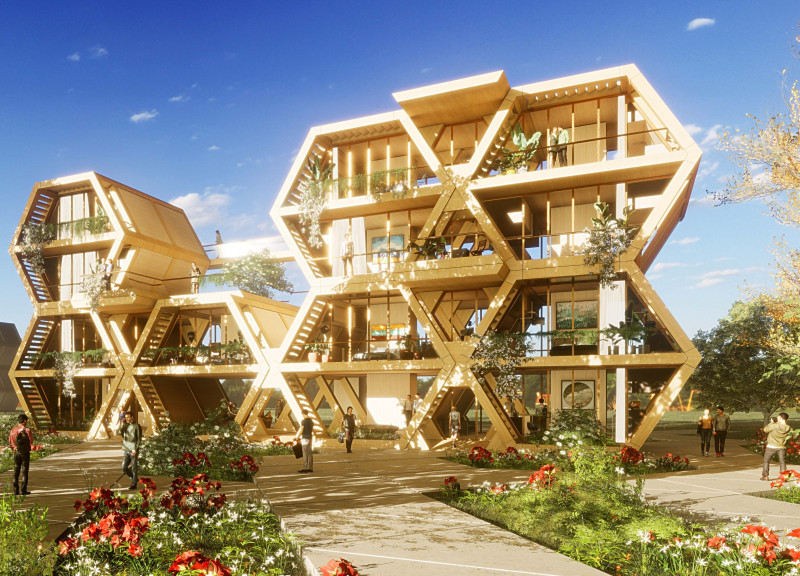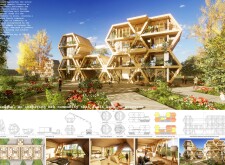5 key facts about this project
The Hexagon project addresses the need for social housing by providing sustainable and affordable living options. Set in an urban environment, the design focuses on modular units that promote community interaction. By carefully considering how residents will live together, the project fosters a sense of belonging and connection. Communal spaces are integrated into the design, encouraging social engagement among residents.
Community Integration
The layout emphasizes communal areas that facilitate interaction among residents. These spaces are situated between the modular units, inviting people to gather and take part in outdoor activities. This arrangement strengthens community ties and creates a lively atmosphere. The design promotes social bonds, making it a place where people can feel at home.
Modular Design
A key feature of the project is its modular design system, which allows for easy assembly. This reduces construction time and minimizes waste, making the building process more efficient and environmentally friendly. The various housing options, including Studio Flats and 1-Bed to 2/3-Bed layouts, cater to a diverse population. This flexibility ensures that families of different sizes and needs can find suitable accommodations.
Material Considerations
While specific materials are not stated in detail, there is a clear commitment to using environmental materials. This reflects the project's dedication to sustainability in construction. Features such as built-in furniture and natural ventilation are included to enhance the quality of life for residents. Each element is thoughtfully designed to support comfortable living while maintaining efficiency.
Design Features
The design includes typical floor plans that prioritize functionality and comfort. Shading and privacy screens are incorporated into the layout, providing individual space while allowing for openness. These details help create a living environment that balances personal needs with community engagement, ensuring that residents feel connected yet secure in their homes.



















































